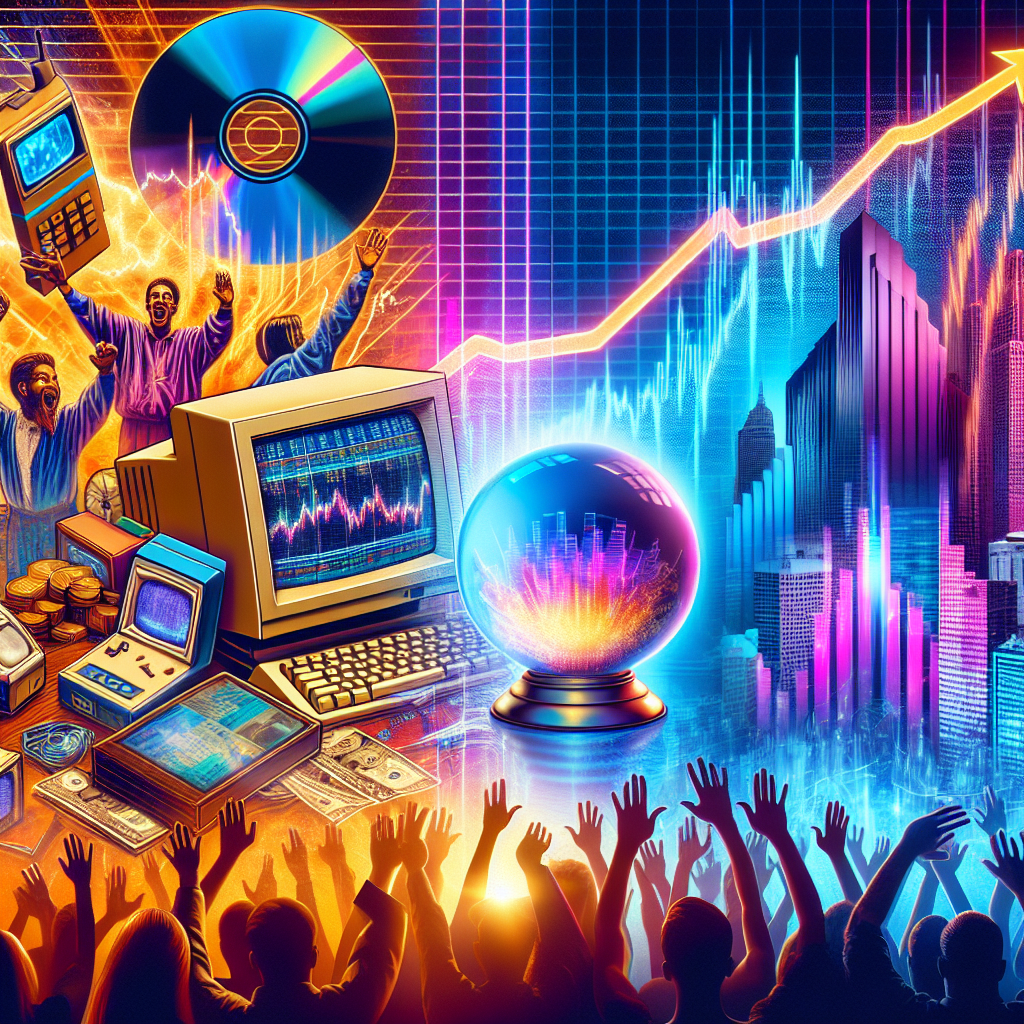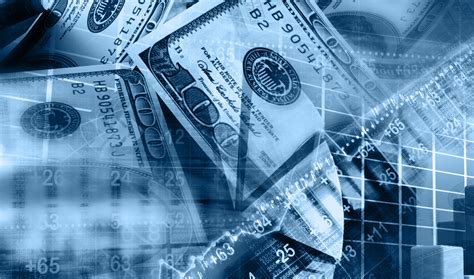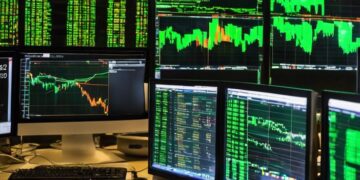In an increasingly interconnected and volatile global landscape, understanding the future trajectory of financial markets and national economies is not merely an academic exercise; it is a critical imperative for businesses, investors, policymakers, and indeed, every individual navigating their financial lives. The economic outlook, shaped by a complex interplay of geopolitical events, technological advancements, consumer behavior, and policy decisions, dictates investment strategies, employment prospects, and the overall quality of life. For content creators, providing in-depth, authoritative insights into expert economic predictions is a goldmine for search engine optimization (SEO) and high Google AdSense revenue, as the public consistently seeks clarity amidst uncertainty. This comprehensive analysis will delve into the multifaceted factors influencing global economic forecasts, synthesize prevailing expert opinions from leading institutions, and explore the potential implications for various sectors, offering a nuanced perspective on the challenges and opportunities that lie ahead.
The Confluence of Forces Shaping Global Economies
Predicting economic trends is akin to forecasting weather patterns in a dynamic, ever-changing climate. Numerous powerful forces constantly interact, creating a complex web of influences that defy simplistic analysis. To grasp the essence of any economic outlook, one must first comprehend these foundational drivers.
A. Geopolitical Stability and Conflict
Global stability is a cornerstone of economic prosperity. Geopolitical tensions, trade wars, regional conflicts, and major international disputes can profoundly disrupt supply chains, deter foreign investment, trigger commodity price spikes (especially energy), and erode consumer and business confidence. The ongoing conflict in Eastern Europe, for instance, has sent shockwaves through global energy and food markets, contributing to inflationary pressures worldwide. Escalations in any major geopolitical hotspot carry the potential to derail even the most optimistic economic forecasts, fostering uncertainty that chills investment and consumption. The stability of international trade agreements and alliances also plays a vital role in enabling predictable and efficient economic exchanges.
B. Inflationary Pressures and Monetary Policy
Inflation—the rate at which the general level of prices for goods and services is rising, and purchasing power is falling—has emerged as a dominant theme in recent economic discussions. Central banks globally, led by institutions like the U.S. Federal Reserve, the European Central Bank, and the Bank of Japan, wield powerful monetary policy tools to combat inflation and stabilize economies.
- Interest Rates: Raising interest rates is a primary tool to cool an overheated economy by making borrowing more expensive for businesses and consumers, thereby reducing demand. Conversely, lowering rates stimulates economic activity. The timing and magnitude of these rate adjustments are closely watched, as they directly impact mortgage rates, business loans, and bond yields.
- Quantitative Tightening/Easing: Beyond interest rates, central banks can influence money supply through quantitative tightening (selling government bonds to reduce liquidity) or quantitative easing (buying bonds to inject liquidity). These actions affect long-term interest rates and the overall availability of credit.
- Inflationary Drivers: Current inflation is often attributed to a combination of factors:
- Demand-Pull Inflation: Excess aggregate demand relative to supply.
- Cost-Push Inflation: Supply chain disruptions, rising energy prices, and labor shortages increasing production costs.
- Wage-Price Spiral: A cycle where rising wages lead to higher prices, which in turn lead to demands for higher wages.
The delicate balancing act of controlling inflation without triggering a recession is the paramount challenge for central bankers. Their credibility and foresight are crucial for anchoring inflation expectations.
C. Technological Advancements and Disruption
Innovation is a perpetual engine of economic growth, but it also brings disruption. Rapid advancements in areas like Artificial Intelligence (AI), biotechnology, renewable energy, and automation are reshaping industries, creating new markets, and transforming labor forces.
- Productivity Gains: New technologies can dramatically increase productivity, leading to higher output per worker and potentially non-inflationary growth.
- Job Displacement and Creation: Automation might displace jobs in some sectors, but it also creates entirely new roles requiring different skill sets, necessitating significant investment in education and retraining programs.
- New Business Models: Digital platforms, sharing economies, and AI-driven services are fundamentally changing how businesses operate and interact with consumers.
- Investment Cycles: Technological breakthroughs often trigger massive investment cycles as companies strive to adopt and capitalize on new capabilities.
The pace and nature of technological adoption will significantly influence which sectors thrive and which face structural challenges in the coming years.
D. Consumer Behavior and Confidence
Consumer spending typically accounts for a significant portion of a nation’s Gross Domestic Product (GDP). Therefore, consumer confidence—their optimism about their financial future and the broader economy—is a critical leading indicator.
- Saving vs. Spending: Economic uncertainty often leads consumers to save more and spend less, dampening demand. Conversely, high confidence encourages discretionary spending.
- Debt Levels: High household debt can limit future spending capacity, making consumers more vulnerable to economic shocks.
- Labor Market Strength: A strong job market, characterized by low unemployment and rising wages, bolsters consumer confidence and spending power.
- Inflation’s Impact: Persistent high inflation erodes purchasing power, forcing consumers to prioritize essential goods and services, often reducing discretionary spending.
Understanding shifts in consumer sentiment and spending patterns is vital for forecasting economic performance.
E. Labor Markets and Demographics
The health of the labor market—unemployment rates, wage growth, and labor participation—is intrinsically linked to economic vitality. Demographic shifts, such as aging populations and migration patterns, also have profound long-term implications.
- Labor Shortages: In some advanced economies, declining birth rates and aging workforces are leading to labor shortages, which can drive up wages but also constrain economic output if not addressed by automation or immigration.
- Productivity of Workforce: Investments in education, skills training, and healthcare can enhance labor productivity, fostering long-term economic growth.
- Gig Economy and Remote Work: The rise of the gig economy and widespread adoption of remote work models are reshaping employment structures, influencing urban development, and creating new challenges for policy-making (e.g., labor rights, taxation).
- Generational Shifts: Different generations have distinct spending habits, technological aptitudes, and work preferences, impacting everything from housing markets to consumer goods demand.
A robust and adaptable labor market is essential for sustainable economic expansion.
F. Climate Change and Environmental Policy
The escalating impacts of climate change and the global response through environmental policies are increasingly becoming central to economic forecasting.
- Physical Risks: Extreme weather events (floods, droughts, heatwaves) cause immense economic damage, disrupt agriculture, and strain infrastructure.
- Transition Risks: Policies aimed at decarbonization (e.g., carbon taxes, regulations on fossil fuels) create transition risks for carbon-intensive industries but also massive opportunities for green technologies and renewable energy.
- Green Investment: A surge in investment in renewable energy, electric vehicles, sustainable infrastructure, and circular economy models is driving new industries and job creation.
- Supply Chain Resilience: Climate impacts necessitate building more resilient and localized supply chains to mitigate disruptions.
The global commitment to sustainability will fundamentally reshape industrial landscapes and investment flows over the coming decades.
Synthesizing Expert Economic Predictions
Leading financial institutions, intergovernmental organizations, and economic think tanks regularly publish their economic outlooks, offering a diverse range of forecasts often updated quarterly. While specific numbers vary, common themes and areas of consensus (and divergence) emerge.
A. Global Growth Projections
Most expert predictions for global economic growth in the near term (e.g., next 12-24 months from mid-2025) point towards:
- Modest Slowdown/Stabilization: Following a period of post-pandemic recovery and subsequent inflation-driven volatility, the consensus leans towards a more moderate growth rate globally. This deceleration is largely attributed to higher interest rates, persistent inflation, and lingering geopolitical uncertainties.
- Regional Divergence: Projections often highlight significant differences between regions.
- Developed Economies: Many anticipate slower, but potentially more stable, growth as central banks manage inflation. The Eurozone, influenced by energy prices and the conflict in Eastern Europe, may face more headwinds than the United States, which often demonstrates greater resilience due to its diverse economy and strong labor market.
- Emerging Markets: These economies present a mixed picture. Some, particularly those heavily reliant on commodity exports, may benefit from higher prices. However, others could face challenges from a strong U.S. dollar, higher global interest rates increasing debt servicing costs, and slower demand from major trading partners. China’s economic trajectory, influenced by domestic policy shifts (e.g., real estate sector, consumption stimulus), remains a significant variable for global growth.
- Inflation Normalization (Gradual): Experts generally foresee inflation easing from its peaks, but the path to central bank targets (typically around 2%) is expected to be gradual and potentially bumpy. Supply chain normalization, moderating energy prices, and the lagged effects of monetary tightening should contribute to this. However, persistent wage pressures or unexpected supply shocks could prolong elevated inflation.
B. Interest Rate Trajectories
Central bank actions remain a focal point for expert predictions.
- Peak Rates Approaching/Reached: Many economists believe that major central banks are either near the peak of their hiking cycles or have already reached it, particularly for the U.S. Federal Reserve.
- “Higher for Longer” Sentiment: While rate hikes may pause, the expectation is that interest rates will remain elevated for a longer period than initially anticipated, as central banks remain vigilant against a resurgence of inflation. A swift return to pre-pandemic low rates is not widely foreseen.
- Potential for Cuts (Later): Some models predict rate cuts in late 2025 or 2026, but these would likely be cautious and data-dependent, occurring only if inflation convincingly moves towards targets without triggering significant economic downturns.
C. Labor Market Forecasts
The resilience of labor markets has surprised many economists, even amidst tighter monetary conditions.
- Cooling, Not Cracking: The consensus suggests a gradual cooling of historically tight labor markets. Unemployment rates might edge up slightly from multi-decade lows, but a sharp spike indicative of a deep recession is not the base case for most forecasts.
- Wage Growth Moderation: Wage growth, while still elevated in many sectors, is expected to moderate as labor demand cools and inflation expectations temper. This is a critical factor for central banks monitoring inflation.
- Sectoral Shifts: Ongoing technological shifts will continue to influence job creation and destruction, with demand for skills in tech, green energy, and certain service sectors likely remaining robust, while some traditional manufacturing or administrative roles may decline.
D. Sector-Specific Outlooks
Different sectors will navigate the economic landscape with varying degrees of success.
- Technology: Continues to be a growth driver, particularly with the explosion of interest and investment in AI. However, some tech segments may face headwinds from higher interest rates impacting venture capital funding and profitability pressures for less established firms.
- Energy: Global energy markets will remain sensitive to geopolitical developments. The transition to renewables continues, driving investment, but traditional energy sources will remain crucial in the short to medium term.
- Real Estate: Higher interest rates have cooled housing markets globally, impacting affordability. Commercial real estate faces challenges from remote work trends and higher borrowing costs.
- Manufacturing: Global supply chains are gradually improving, but regionalization and diversification efforts continue. Manufacturing output will be influenced by global demand and commodity prices.
- Healthcare: Driven by aging populations and technological advancements, the healthcare sector generally demonstrates resilience, though it faces pressures from rising costs and labor shortages.
- Retail & Consumer Goods: Dependent on consumer confidence and purchasing power. Inflation-adjusted spending might be constrained, pushing consumers towards value-for-money options. E-commerce will continue its growth, but physical retail is adapting through experiential concepts.
Divergent Views and Risk Factors

While general themes emerge, expert predictions are rarely unanimous. Key areas of divergence and significant risk factors exist.
A. Recession Probability
Perhaps the most significant point of contention among economists is the probability and severity of a global recession.
- Soft Landing Advocates: Some believe central banks can successfully navigate a “soft landing,” bringing inflation down without triggering a severe economic downturn. This scenario hinges on flexible labor markets and gradual supply chain normalization.
- Mild Recession Expectation: Many others anticipate a mild, short-lived recession in major economies, viewing it as a necessary correction to bring inflation under control.
- Hard Landing Concern: A smaller but vocal group warns of a more severe “hard landing,” arguing that aggressive monetary tightening and accumulated global debt could trigger a deeper contraction.
B. Geopolitical “Black Swans”
Unforeseen geopolitical events (“black swans”) remain the most unpredictable and potentially impactful risk. Escalation of existing conflicts, new geopolitical flashpoints, cyber warfare, or major political instability in key economic regions could significantly alter forecasts.
C. Debt Levels and Financial Stability
High levels of public and private debt globally (exacerbated by pandemic-era spending) pose a risk. Higher interest rates increase debt servicing costs, potentially straining government budgets, corporate balance sheets, and household finances, raising concerns about financial stability in vulnerable sectors or countries.
D. Energy Market Volatility
Continued volatility in global energy markets, driven by geopolitical events or supply constraints (e.g., OPEC+ decisions, underinvestment in traditional energy), could derail inflation progress and impact industrial output, particularly in energy-importing nations.
E. Long-Term Productivity Growth
The extent to which new technologies, particularly AI, will translate into significant, sustained productivity growth is a key debate. If productivity gains are lower than anticipated, long-term growth potential could be constrained.
F. Climate Transition Risks
While green investment is an opportunity, the pace and cost of the transition to a low-carbon economy could create significant economic disruptions for industries reliant on fossil fuels or those struggling to adapt to new regulations.
Navigating the Future: Implications and Strategies
For various stakeholders, these economic outlooks translate into actionable strategies and necessary adaptations.
A. For Businesses
- Supply Chain Diversification: Reducing reliance on single regions or suppliers to enhance resilience against geopolitical and climate shocks.
- Cost Management & Efficiency: Focusing on operational efficiencies and prudent cost control to navigate periods of slower growth or higher input costs.
- Digital Transformation & AI Adoption: Investing in technology to boost productivity, enhance customer experience, and explore new business models.
- Talent Strategy: Adapting to evolving labor markets by investing in upskilling and reskilling employees, embracing flexible work models, and attracting diverse talent.
- Sustainability Integration: Embedding environmental, social, and governance (ESG) principles into core business strategy to meet regulatory demands, investor expectations, and consumer preferences.
B. For Investors
- Diversification: Spreading investments across different asset classes, geographies, and sectors to mitigate risks.
- Quality Focus: Prioritizing companies with strong balance sheets, consistent earnings, and proven competitive advantages.
- Long-Term Perspective: Avoiding panic reactions to short-term market volatility and maintaining a focus on long-term investment goals.
- Thematic Investing: Considering investments in high-growth themes aligned with future trends, such as AI, renewable energy, and healthcare innovation.
- Inflation Hedges: Exploring assets that historically perform well during periods of inflation, such as real estate, commodities, or inflation-protected securities.
C. For Policymakers
- Fiscal Discipline: Managing national debt levels to maintain fiscal space for future crises or necessary investments.
- Targeted Support: Implementing policies that provide targeted support to vulnerable households or sectors without exacerbating inflation.
- Structural Reforms: Addressing long-standing issues like labor market rigidities, housing supply shortages, and education gaps to enhance long-term growth potential.
- International Cooperation: Fostering multilateral cooperation on global challenges like climate change, trade, and financial stability.
- Innovation Policy: Creating an environment that fosters technological innovation and its widespread adoption.
D. For Individuals
- Financial Resilience: Building emergency savings, managing personal debt, and reviewing budgets to withstand economic fluctuations.
- Skill Development: Investing in continuous learning and acquiring in-demand skills to enhance career adaptability and earning potential.
- Retirement Planning: Regularly reviewing retirement savings and investment strategies in light of inflation and market conditions.
- Housing Decisions: Making informed choices about housing, considering the impact of interest rates and local market dynamics.
- Conscious Consumption: Being mindful of spending habits and recognizing the impact of inflation on purchasing power.
A Landscape of Dynamic Possibilities

The economic outlook for the coming years is characterized by a blend of persistent challenges and exciting opportunities. While central banks grapple with inflation, geopolitical tensions simmer, and demographic shifts unfold, the relentless march of technological innovation, particularly in areas like AI and green energy, promises to reshape global economies in profound ways. Expert predictions, though varied in their precise forecasts, largely converge on themes of moderation, adaptation, and the critical importance of resilience. For businesses, investors, and individuals alike, staying informed, maintaining agility, and adopting a strategic long-term perspective will be paramount to navigating this dynamic landscape successfully. By understanding the intricate forces at play and leveraging insightful analysis, stakeholders can make more informed decisions, capitalize on emerging trends, and build a more robust financial future, ultimately supporting a thriving economy that generates significant value for all.







